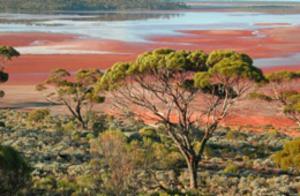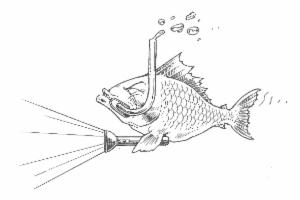Search for Conger wilsoni returned 567 results.
Refine results
Refine results
Section
- Species (416)
- Common Name (102)
- Site Page (23)
- Biodiversity Science project (18)
- Support article (5)
- Institution (2)
- Data provider (1)
Image available
- Yes (226)
Taxonomic status
- Accepted (241)
- Synonym (132)
- Heteroptypic Synonym (20)
- Homotypic Synonym (12)
- unreviewed (4)
- Miscellaneous Literature (3)
- unreviewedSynonym (2)
- Excluded (1)
- Misapplied (1)
Conservation status in Australia
- Endangered (1)
- Vulnerable (1)
Conservation status in NSW
- Endangered (1)
- Vulnerable (1)
Conservation status in QLD
- Endangered (1)
Conservation status in VIC
Conservation status in TAS
- Rare (3)
Conservation status in SA
- Rare (2)
Conservation status in WA
Conservation status in NT
- Vulnerable (1)
-
unranked: Leptocephalus wilsoni - miscellaneous literature
- Record a sighting
- Miscellaneous Literature
-
Site Page: Coastal Environment Centre using Atlas of Living Australia – Atlas of Living Australia
Posted on 18th August 2014 Species occurrence data maps produced by the Atlas of Living Australia are being used by the Coastal Environment Centre (CEC) in North Narrabeen, NSW. The centre uses the maps on the animal cards that appear in the centre...
-
Site Page: ALA Advisory Board – Atlas of Living Australia
Posted on 29th September 2017 The newly established ALA Advisory Board held its first meeting in Canberra on 21 September 2017. The role of the Board is to support the high-level direction and delivery of the ALA through provision of vision, advocacy and advice. The Board currently comprises five Members and three ex-officio members, and is Chaired by Dr Patrick Greene...
-
Site Page: April 2010 newsletter summary – Atlas of Living Australia
Posted on 11th April 2010 April 2010 - Atlas activities, articles and reports, media releases, conferences and workshops, biodiversity weblinks From the Director Donald Hobern talks about simple ways to share species information. (article no longer available) The ALA aims to bring together all available information on species found in Australia – and to make it as easy as possible for any researcher or other user to help to complete the picture...
-
Biodiversity Science project: Great Western Woodlands
The Great Western Woodlands (GWW) is a 16 million hectare swath of woodlands, mallee and heath interspersed with salt lakes, granite outcrops and in the north-west, banded ironstone formations (BIF) ranges. The GWW represents the largest intact remaining temperate woodland in the world. In 2011, BirdLife Australia and The Nature Conservancy formed a partnership to fund and oversee a bird research and conservation project in the Great Western Woodlands...

-
Biodiversity Science project: Secchi disk marine monitoring project
Guided by Friends of Gulf St Vincent, volunteers take secchi disk readings from jetties or boats. The secchi disk is lowered into the water until no longer visible. This measurement provides a relative measure of turbidity.

-
Biodiversity Science project: The Relationship between Suspicious Thoughts and Seeking Support
This research project uses a technique called ‘Experience Sampling Methodology (ESM)’. ESM is a relatively new methodology which looks at people’s thoughts and feelings on a moment-by-moment basis. This is done by asking participants to answer some questions in an online diary, using their own mobile phone, at random time points throughout the day...

-
Site Page: December 2009 newsletter summary – Atlas of Living Australia
Posted on 27th December 2009 December 2010 – Atlas activities, articles and reports, media releases, conferences and workshops, biodiversity weblinks From the Director Donald Hobern reports on recent progress. (article no longer available) Partners/Stakeholder update Alastair Graham, Fish Collection Manager reports on the Australian National Fish Collection (ANFC)...
-
Biodiversity Science project: WomSAT
WomSAT is a new resource for communities to record sightings of wombats across the country. Australia's unique wombats are in crisis - Their numbers are declining and your help is needed to protect them by recording where you see wombats and their burrows in your local area. We are particularly interested in the incidence of mange in the population and where it occurs and where it does not occur...

-
Biodiversity Science project: BeeCounted
For thousands of years, beekeepers have only guessed what's happening inside their hives. Bee Counted is about to change all that. We collect environmental conditions from hives around the world, then analyze and share that information with curious individuals, citizen scientists, and entomologists. We know bees are in trouble, and that tried and true beekeeping methods are no longer working...
